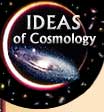
|
|
 |
Who Was Edwin Hubble?

|
Who Was Edwin Hubble? |
|
|
In 1919 Hubble finally joined the Mount Wilson Observatory. There his achievements made him the foremost astronomer of the 20th century and one of the most influential scientists of all time in changing our understanding of the universe. He demonstrated conclusively, after centuries of fruitless speculation by other astronomers, that spiral nebulae are independent galaxies at great distances beyond our own galaxy. This great accomplishment was only the starting point for Hubble. Other scientists, including Einstein, had assumed the universe to be static. Hubble went on to show that the universe is expanding. |
||
|
|
Hubble
lived in San Marino, California near Pasadena. He traveled to Europe
several times to give lectures and receive important honors. Hubble
partied in nearby Hollywood with movie stars, including Charlie Chaplin
and Greta Garbo, and with famous writers, including Aldous Huxley, Christopher
Isherwood, and Anita Loos. But his favorite hobby was fishing.
World War II interrupted Hubble's work on cosmology. He served as chief of ballistics and director of the Supersonic Wind Tunnels Laboratory at the Army Proving Grounds in Maryland. He was awarded the Medal of Merit for his war-time work. After the war he supported the construction of the gigantic 200-inch telescope on Palomar Mountain south of Mount Wilson, which helped put him on the cover of Time magazine in 1948. In 1953, shortly after the 200-inch was completed, Hubble died of a heart attack. It was too soon for conclusive answers from the research program he had planned for the new telescope. Indeed different measurements of the expansion of the universe did not reach broad agreement until another great instrument was placed in orbit, named the Hubble Space Telescope.
|
Copyright ©. Brought to you by the Center for History of Physics, a Division of the American Institute of Physics |